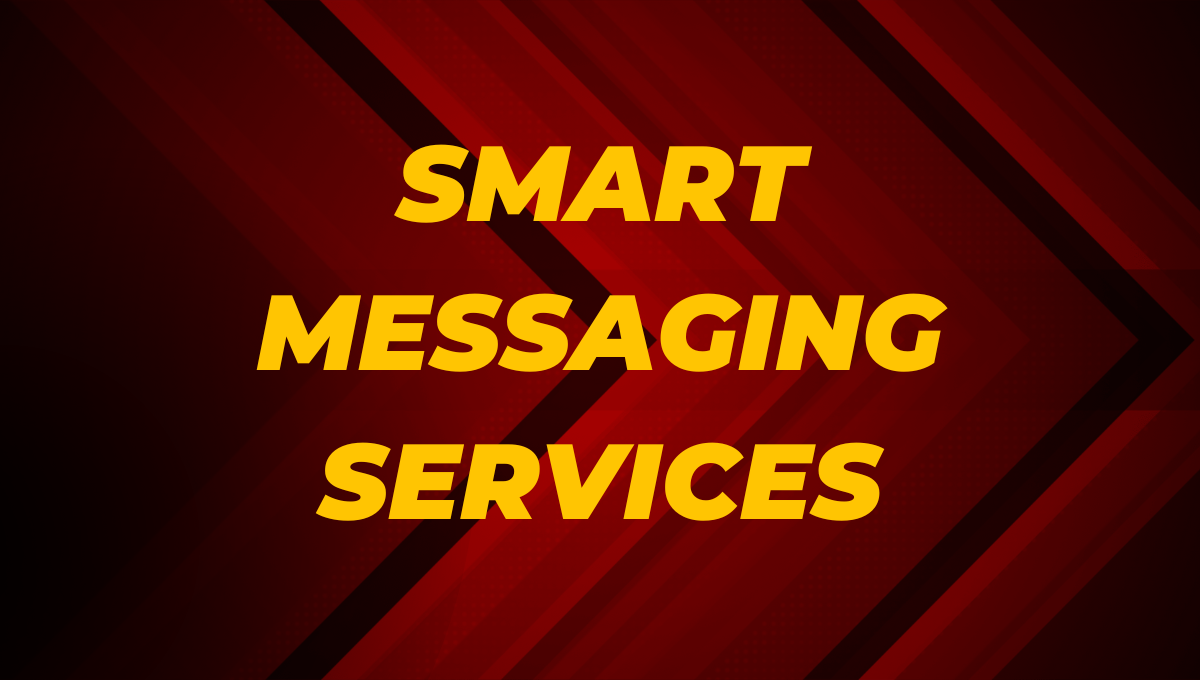In digital communication, smart messaging services have revolutionized the way we interact online. These platforms offer convenient and efficient ways to exchange messages, share media, and connect with others. One essential feature that enhances the security and reliability of these services is OTP smart.
Smart messaging services represent the evolution of traditional messaging platforms, offering advanced features such as multimedia sharing, group chats, and real-time communication. These services leverage the power of technology to provide seamless and intuitive user experiences, making communication more accessible and engaging for users worldwide.
Moreover, smart messaging services have become indispensable tools for personal and professional communication, facilitating collaboration, information sharing, and social interaction. With features like end-to-end encryption and cross-platform compatibility, these services ensure privacy and accessibility across devices and networks.
Introduction to OTP Smart
OTP smart, or One-Time Password smart, is a security feature designed to protect online transactions and user accounts from unauthorized access and fraud. It works by generating a unique code that is sent to the user’s registered device, typically via SMS, email, or push notification. The user must then enter this code to verify their identity and complete the transaction or login process.
Furthermore, OTP smart adds an extra layer of security to smart messaging services, safeguarding user accounts and transactions from cyber threats such as phishing attacks, identity theft, and account takeover. By requiring users to authenticate themselves with a one-time password, messaging service providers can mitigate the risk of unauthorized access and protect user privacy and sensitive information.
The Role of OTP Smart in Smart Messaging Services
In smart messaging services, OTP smart features play a crucial role in enhancing security and user trust. By integrating OTP smart into their platforms, messaging service providers can offer an additional layer of protection for user accounts and transactions. This helps prevent unauthorized access, identity theft, and other security threats, ensuring a safer and more secure messaging experience for users.
Moreover, OTP smart enhances user confidence and trust in smart messaging services, fostering a positive user experience and strengthening brand loyalty. Users feel reassured knowing that their accounts and transactions are protected by robust security measures, leading to increased engagement and satisfaction with the messaging platform.

Enhancing Security with OTP Smart
OTP smart enhances security by providing a dynamic and time-sensitive verification code that is unique to each transaction or login attempt. This code serves as a temporary password, ensuring that only the intended recipient can access their account or complete the transaction. By requiring users to verify their identity with OTP smart, messaging service providers can significantly reduce the risk of unauthorized access and fraud.
Additionally, OTP smart helps detect and prevent unauthorized access attempts, such as brute-force attacks and account hijacking, by requiring users to verify their identity with a one-time password. This proactive approach to security helps safeguard user accounts and transactions, protecting sensitive information and preventing financial losses or data breaches.
Improving User Experience with OTP Smart
While OTP smart primarily serves as a security feature, it also contributes to a seamless and user-friendly experience for messaging service users. By automating the verification process and providing instant access to accounts and transactions, OTP smart reduces friction and enhances convenience for users. This helps streamline the user experience, making it easier and more efficient to engage with smart messaging services.
Furthermore, OTP smart features such as auto-detection of OTPs and one-click verification streamline the authentication process, saving users time and effort. Users appreciate the simplicity and convenience of OTP smart, leading to higher satisfaction and increased usage of the messaging platform.
Implementing OTP Smart: Best Practices
Implementing OTP smart features in smart messaging services requires careful planning and execution. Messaging service providers must ensure compatibility with their existing infrastructure, select secure authentication methods, and comply with regulatory requirements. By following best practices for OTP smart implementation, providers can maximize security and user experience for their customers.
Moreover, messaging service providers should prioritize user privacy and data protection when implementing OTP smart features, ensuring that sensitive information is encrypted and securely transmitted. Transparent communication with users about the purpose and benefits of OTP smart helps build trust and confidence in the security of the messaging platform.
Addressing Challenges in OTP Smart Implementation
While OTP smart offers significant security benefits, implementing this feature can pose challenges for messaging service providers. Delivery delays, network issues, and user education are common obstacles that must be addressed to ensure the effectiveness of OTP smart. By proactively monitoring and optimizing the implementation process, providers can overcome these challenges and enhance the reliability of OTP smart features.
Furthermore, ongoing monitoring and analysis of OTP smart usage and performance help identify and address potential issues or vulnerabilities in the authentication process. By continuously optimizing OTP smart implementation, messaging service providers can maintain the highest standards of security and reliability for their users.
Future Trends in OTP Smart and Smart Messaging Services
Looking ahead, the future of OTP smart and smart messaging services is characterized by ongoing innovation and advancement. Emerging trends such as biometric authentication, machine learning, and AI-driven security solutions are poised to further enhance the security and reliability of smart messaging services. By embracing these trends and leveraging OTP smart effectively, messaging service providers can stay ahead in the rapidly evolving landscape of digital communication.
OTP smart features play a vital role in enhancing the security and user experience of smart messaging services. By providing an additional layer of protection for user accounts and transactions, OTP smart helps prevent unauthorized access and fraud, ensuring a safer and more secure messaging experience for users worldwide. As smart messaging services continue to evolve, OTP smart will remain a cornerstone of security and trust in digital communication.
FAQs
- What is OTP smart, and how does it enhance security in messaging services?
OTP smart, or One-Time Password smart, is a security feature that provides a dynamic and time-sensitive verification code for user authentication. It enhances security in messaging services by adding an extra layer of protection against unauthorized access and fraud.
- How does OTP smart improve the user experience in smart messaging services?
OTP smart improves the user experience by streamlining the authentication process and reducing friction for users. With features such as auto-detection of OTPs and one-click verification, OTP smart enhances convenience and efficiency in accessing accounts and completing transactions.
- What challenges might messaging service providers face when implementing OTP smart features?
Implementing OTP smart features may pose challenges such as delivery delays, network issues, and user education. However, proactive monitoring, optimization, and transparent communication with users can help address these challenges effectively.
- What are some best practices for implementing OTP smart in smart messaging services?
Best practices for implementing OTP smart include ensuring compatibility with existing infrastructure, selecting secure authentication methods, and prioritizing user privacy and data protection. Transparent communication with users about the benefits and purpose of OTP smart is also essential.
- What future trends can we expect in OTP smart and smart messaging services?
Future trends in OTP smart and smart messaging services include advancements in biometric authentication, machine learning, and AI-driven security solutions. These innovations are poised to further enhance the security and reliability of messaging platforms, ensuring a safer and more secure communication experience for users.

 Business Solutions5 months ago
Business Solutions5 months ago
 Business Solutions3 months ago
Business Solutions3 months ago












